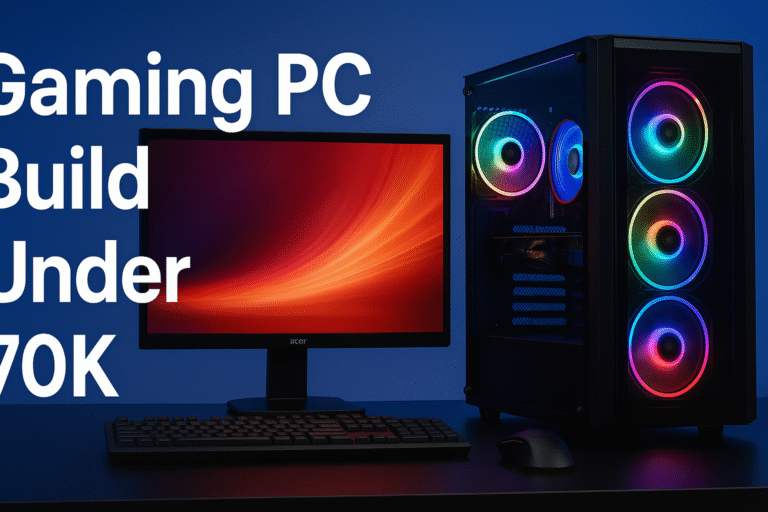
In the ever-evolving world of artificial intelligence, Google’s latest innovation, Veo 3, stands out as a monumental leap forward in the realm of video generation technology. As the demand for dynamic, high-quality visual content surges across industries—from entertainment and advertising to education and content creation—Google’s Veo 3 answers the call with an intelligent, high-resolution, text-to-video generation system.
In this comprehensive blog, we’ll explore what Google Veo 3 AI is, how it works, its applications, advantages over competitors, and what it means for the future of content creation.
What is Veo 3 by Google AI?
Veo 3 is Google’s most advanced AI video generation model, capable of creating high-definition, 1080p videos from simple text prompts. Announced in May 2024 during Google I/O, Veo 3 is a successor to its earlier prototypes, refined with better contextual understanding, motion consistency, and cinematic storytelling capabilities.
Google developed Veo 3 using cutting-edge machine learning techniques, combining transformer-based architectures, diffusion models, and advanced natural language processing. The model can interpret complex text descriptions and translate them into detailed, visually appealing, and dynamic video clips lasting up to a minute or longer.
Key Features of Google Veo 3:
- Text-to-Video Generation
Just like how ChatGPT converts text prompts into coherent answers, Veo 3 converts natural language descriptions into high-resolution video sequences. - 1080p Video Output
One of the defining features of Veo 3 is its ability to generate full-HD videos with rich colors, sharp details, and smooth motion. - Cinematic Realism
Veo understands cinematic terms like “aerial shot,” “timelapse,” or “slow motion,” and accurately simulates these effects in video generation. - Physics-aware Motion
Unlike earlier models, Veo 3 integrates realistic motion physics, making objects and characters move naturally within the frame. - Extended Duration Support
It can generate videos with multiple scenes, each transitioning smoothly—allowing for storytelling through a single prompt. - Multi-modal Input
Veo 3 can also work with image prompts, sketches, or style references, allowing for greater control over output.
How Does Veo 3 Work?
Veo 3 is built upon large-scale video datasets, which train the model to understand context, motion, lighting, and cinematic elements. It combines the strengths of:
Diffusion Models: To incrementally generate video frames with increasing accuracy.
Transformer Models: To understand and translate complex language prompts.
Generative Adversarial Networks (GANs): For polishing realism in textures and motion.
When you input a text prompt like “A lion walking through the savannah during golden hour,” Veo 3 breaks down the semantics, visualizes the scene, and begins rendering frame-by-frame output until a coherent video is produced.
Applications of Veo 3 Google AI
- Content Creation
Social media creators, vloggers, and YouTubers can now generate cinematic B-roll footage or complete video clips without filming or editing.
- Advertising & Marketing
Brands can create promotional videos in seconds—tailored to specific products, moods, or target demographics using just descriptive prompts.
- Filmmaking & Pre-visualization
Filmmakers can storyboard entire scenes using Veo 3 before committing to expensive live shoots or animation processes.
- Education & E-learning
Teachers can use Veo to generate educational videos on complex topics, enhancing visual learning without production hassles.
- Gaming & Virtual Environments
Developers can design in-game cinematic sequences or preview animations quickly using AI-generated content.
- News & Journalism
Newsrooms can produce visual content from headlines or descriptions, useful especially for topics without video footage.
Veo 3 vs. Other AI Video Models
Google’s Veo 3 surpasses most competitors with its scene realism, understanding of camera angles, and physics-aware motion generation.
Limitations of Veo 3
Despite being highly advanced, Veo 3 isn’t without its challenges:
Resource Intensive: Video generation requires significant computing power.
Closed Beta Access: As of mid-2025, Veo 3 is available through Google Labs on an invitation-only basis.
Limited Real-Time Editing: Currently, prompts need to be rewritten to change outputs rather than adjusting scenes in real-time.
Potential Bias: Like all generative models, Veo 3 can reflect data biases present in its training sets.
How to Access Google Veo 3
Veo 3 is currently integrated with Google Labs and YouTube Shorts creation tools in experimental stages. Interested users can request access through Google Labs. Once approved, you can begin crafting prompts and experimenting with short-form video creation directly in the browser.
Google also plans to integrate Veo 3 into Google Cloud Video APIs and make it part of Workspace AI tools for professional use.
SEO Benefits of Using Veo 3 in Content Strategy
For digital marketers, Veo 3 opens a new era of AI-enhanced video SEO:
- Faster Video Production
Reduce video turnaround times from weeks to minutes. - Long-Tail Keyword Targeting
Create videos around niche topics that would otherwise be expensive to produce. - Boost Engagement
Videos improve dwell time, click-through rates, and SEO rankings across platforms. - Dynamic Social Media Content
AI-generated videos can be posted frequently, keeping your brand visually fresh. - Video Transcriptions for SEO
Transcribing Veo-generated videos into blog content enhances keyword indexing.
The Future of AI Video Creation
Google Veo 3 is not just another AI tool—it’s a transformative technology that reshapes how we think about video production. As AI-generated visuals become indistinguishable from real-world footage, it’s easy to imagine:
Virtual film studios powered by AI.
AI news broadcasts based on real-time textual updates.
Hyper-personalized video ads for every user.
Language-translated videos using synthetic visuals and voiceovers.
Google plans to continue training Veo with larger datasets, improving temporal consistency, and adding real-time feedback tools for creators.
Ethical Considerations
While the opportunities are vast, so are the ethical questions:
How do we identify AI-generated content?
What happens to traditional video professionals?
Can AI videos be used to spread misinformation?
Google has pledged to embed metadata and watermarks into Veo 3 videos to help identify them as AI-generated and promote responsible use.
Conclusion
Google Veo 3 is a groundbreaking innovation in artificial intelligence that’s poised to change how videos are created, consumed, and monetized. Whether you’re a content creator, educator, or brand marketer, Veo 3 unlocks new possibilities for storytelling without the need for cameras, studios, or actors.
As this technology matures, one thing is certain—the future of video is AI-powered, and with Veo 3, that future is already here.




2 thoughts on “Veo 3 Google AI: Revolutionizing Video Generation Through Artificial Intelligence”